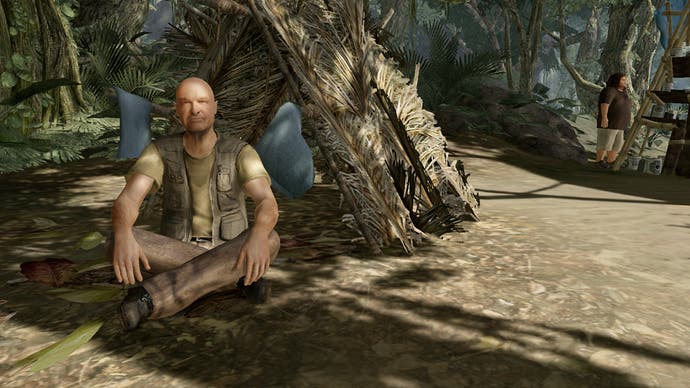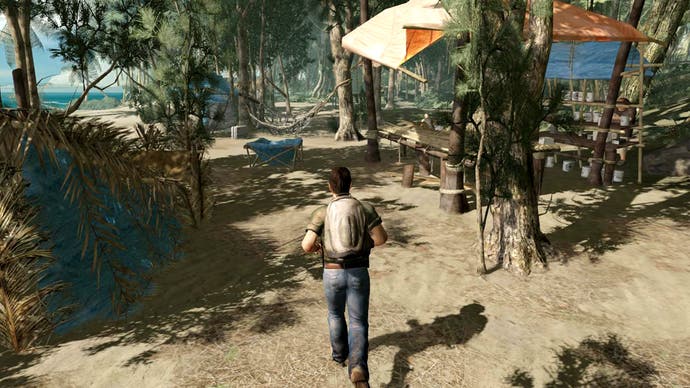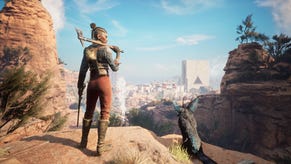Lost
Don't tell it what it can and can't do.
As such, the game's action sections largely play second fiddle to exploration, exposition, and puzzle solving - both on the island, and in your character's past. Lost's trademark flashback sequences are present and correct here, because your character is suffering from amnesia at the beginning, and must piece together his identity and his reason for being on the Oceanic flight through a number of dream-like flashback sequences.
These are key to moving the storyline forward, providing you with information from your past that's useful to your adventure on the island. Each one is triggered by an object or a few words of dialogue, and you're first shown a few scraps of a torn-up photograph before being dropped into a fuzzy, dimly recalled memory of an event. Identify the items from the photograph, and take that same photo in your memory, and you unlock the flashback - an interactive scene you can walk around in, talk to people, and even read notes or listen to recordings in.
Gone Astray
Other key aspects of the show, too, remain intact. All of the main characters are here, of course, and you can talk to them and interact with them as you move through the storyline. All of the key events, too, are present - although you won't actually see them all. After all, viewers of the TV show know full well that here was no mystery, unnamed man on the raft, or at the Black Rock, or at the Hatch when it was blown open - so while you see the impact of those events, and talk to the characters about them, your story brings you through a related but different set of events.

Although ABC didn't have a "bible" for the series, it was still able to provide the Ubisoft team with extensive source material to make sure the game matches the show exactly. "We modelled every location that's in the series - in fact, we got blueprints from ABC," we're told. "We got blueprints for the Swan interior, for all the hatches, and even all the images. We even have a high-level map of the actual beach, and where each character has their tent - and it's identical to the map.
"We also took photos; our artistic director was in Hawaii and took photos of all the tents, so it's duplicated exactly. The only new locations we modelled were in the flashbacks, because those are new locations and new stories. Those were new locations. Even the jungle is as close as we could get for the series - for that, we took photo references of the locations they used in Hawaii. It's almost perfect."
The jungle, by the way, serves as a hub of sorts - you need to pass through it to move back and forth between the key storyline locations, and it's a mini-game in itself to navigate. The jungle is visually confusing, full of lush foliage and narrow pathways, and getting through is akin to solving a maze - you are given clear pointers, and it's important not to stray from the path they set you upon, or you'll never get back to it and will have to restart the maze.

"The main goal was to give the player the sensation of being lost - and the only way to do it was by making a jungle that was dense," the producer explains. "The jungles aren't big maps, because if we made them big we wouldn't be able to fit a lot of vegetation in there. So we made them smaller, but really dense."
On that note, it's worth noting that the game is powered by the GRAW 2 engine - which goes some way to explaining why it looks so incredibly good. Faces and facial animation are excellent, and the locations are modeled with great detail. However, anyone who has played GRAW 2 might pick up on one little point - as games go, it's not so hot on jungles.
"GRAW is pretty much the urban game, so we made a whole new vegetation system, a whole new rendering system for the vegetation," explains our helpful interviewee. "Our biggest challenge was making the game in an engine that's known for urban environments - so the vegetation editor, the vegetation tool, vegetation rendering, LODs for the vegetation and stuff like that, that was the key part."






.png?width=291&height=164&fit=crop&quality=80&format=jpg&auto=webp)


